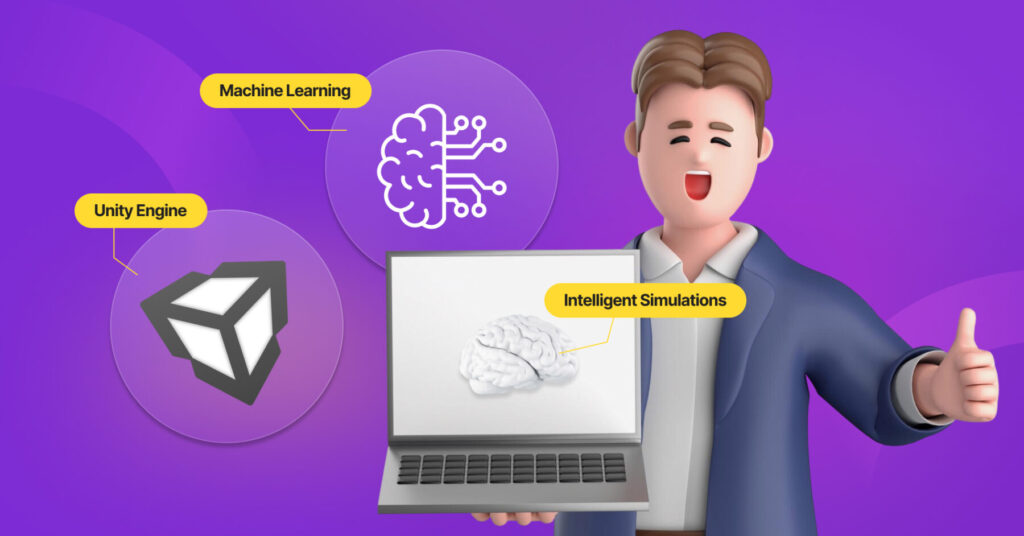Introduction to Unity Engine
Unity Engine, first released in 2005, is a versatile game engine known for its cross-platform compatibility. It allows developers to create games for various platforms, including desktops (Windows or Linux), mobile devices (iOS and Android) and consoles, without needing to rewrite code for each platform. This capability significantly streamlines the development process.
Unity primarily uses C# as its scripting language, leveraging the Mono framework for runtime execution. The integration of PhysX, a powerful physics library, simplifies the implementation of realistic physics in games. Developers can utilise built-in physics functions instead of manually coding complex formulas, making game development more accessible.
Unity has a robust community forum where developers can seek assistance and share knowledge. This collaborative environment contributes to Unity’s popularity as one of the leading game engines today.
Many successful games have been developed using Unity, including:
- Genshin Impact
- Portals 1 and 2
- Hollow Knight
- Subway Surfer
- Marvel Snap
These titles showcase Unity’s capability to support diverse genres and high-quality graphics.
Understanding Game Genres
A game genre categorises games based on shared gameplay characteristics, themes, or styles. Here are some popular genres:
- Action
Fast-paced gameplay focusing on physical challenges and combat. - Adventure
Exploration-driven games with storytelling or puzzle elements. - Role Playing Games (RPG)
Character-centric games with progression and decision-making elements. - Strategy:
Games that require tactical thinking and planning for victory. - Sports:
Simulations of real-world athletic competitions. - Simulation:
Realistic recreations of real-world activities or scenarios.
Each genre presents unique gameplay mechanics and storytelling techniques, catering to a diverse range of player preferences and experiences. Among these, simulation games stand out for their ability to create real-time representations of the real world. These games allow players to engage with realistic scenarios, providing immersive experiences that can educate, entertain, and inform.
The Role of Simulation Games
Simulation games aim to replicate real-world experiences as closely as possible. They often focus on specific activities or scenarios, allowing players to experience the intricacies of operating various vehicles or systems in a virtual environment.
Popular examples of simulation games include truck simulators and plane simulators. As their name suggests, these games will simulate the experience of driving a truck or piloting an aircraft as realistically as possible.

source: https://americantrucksimulator.com/
In addition to entertainment, simulation games can also be developed for training purposes. For example, companies can use gamified training programs to onboard new employees, providing them with engaging and interactive learning experiences.
Simulation games can generate substantial amounts of data based on real-world scenarios. This data can be used for machine learning applications, enabling algorithms to learn from patterns and predict outcomes related to specific phenomena.
Introduction to Machine Learning
Before we dive into the specifics, let’s clarify what machine learning is. Machine learning is a subset of artificial intelligence that enables computers to learn from data by identifying patterns and relationships within that data.
To illustrate this concept, consider teaching a child to recognize a cat. We would describe the cat’s characteristics such as fur, four legs, a tail, pointy ears and unique sounds. With this information, the child can identify cats independently, without further instruction.
Now, returning to our main topic, after developing simulations for training purposes, there are numerous applications beyond gaming that we can explore. For example, we can create simulations to predict events, such as a tsunami in a particular area.
For machine learning to make accurate predictions, it requires high-quality training data, similar to the characteristics used to teach the child about cats. In the case of tsunami simulation, relevant data might include the area’s topography, the size and strength of the tsunami and the surrounding landscape. The more comprehensive and detailed the data collected, the higher the accuracy of the prediction.

source: https://www.researchgate.net/figure/Computer-simulation-7-of-the-tsunami-waves-that-might-be-set-off-in-a-collapse-of_fig2_238823865
Data learning refers to the process of using data to train a model for making predictions or decisions. This data must encompass critical information both before and after a tsunami event. Key factors include the landscape of the affected area, topography, wind pressure, speed and direction.
By collecting information from multiple events, machine learning algorithms can identify patterns and trends. This enables them to predict tsunamis before they occur based on the imputed data. The accuracy of these predictions depends on the quality and detail of the data used for training.
Machine Learning Process
Detailed data learning can significantly improve the accuracy of predictions. Additionally, having more detailed parameters for the physics engine allows simulations to more closely mimic real-world events.

Input Data
To build an effective machine learning model, we need real world data relevant to the phenomenon we want to simulate. For example, in the case of a tsunami simulator, we require data about the landscape of the area, sea movement, the composition of sand near the beach, wind movement, speed and other factors.
It is crucial to collect data both before and after a landscape event. The post-event data helps confirm whether the simulation is functioning correctly.

Simulating Events
Once we have gathered the necessary data, we can proceed with the simulation. We can simulate all relevant physical phenomena using the prepared data. For example, wind movement, speed and sea movement can be used to model a tsunami, while the landscape data will help generate the effects that occur after the tsunami strikes.
Using Unity for simulation allows us to create a landscape that closely resembles the real environment. In the tsunami simulation, we can accurately depict beach level, water movement, tsunami strength and wind dynamics (speed and direction).
Simulating this data provides a visualisation of the event from before it occurs until after it has taken place. It is essential to record all changes in conditions from the initial data to the output data, as this is critical for evaluating the simulation’s accuracy
While utilising all available data is beneficial, it may lead to inaccurate outputs due to limitations within the physics library. Therefore, implementing modifiers for certain parameters may be recommended to achieve results that are as close as possible to real-world conditions.

Output Data
After completing the simulation, we can export the results. The output should reflect the condition of the landscape following the event, including any damage to nearby areas.
This output records all initial and final information, such as position, rotation, sand mass per volume (for example, every 1 cubic metre), etc. The format of the output file can vary; it could be an Excel file (or CSV) or a JSON file.
Running multiple simulations allows us to identify unreliable output data. Therefore, it is important to execute simulations hundreds or even thousands of times with varying multiplier values for each parameter. This approach generates multiple results that we can filter to determine which are reliable and which are not.
Machine Learning
Machine learning cannot make decisions independently. It requires examples to recognise which data yields better results and which does not. Similar to teaching a child, we must guide machine learning models by indicating what is correct and what is not.
To facilitate this process, we assign scores to each piece of data. For example, in handwriting recognition tasks, various methods exist for scoring handwriting samples. One effective approach combines Connectionist Temporal Classification (CTC) Decoding, Bidirectional Long Short-Term Memory (BLSTM), and Convolutional Neural Networks (CNN). This combination enhances the accuracy of calculation in handwriting recognition tasks by effectively managing sequence data and improving character recognition.
Conclusion
In conclusion, this exploration of simulation and machine learning using the Unity engine has the potential to advance the field of machine learning beyond just game development. We have demonstrated how Unity’s capabilities can be leveraged to create accurate simulations of complex phenomena, such as natural disasters like tsunamis. When combined with machine learning algorithms, these simulations offer a promising approach to predicting and preparing for real-world events.
The process outlined above highlights the fundamentals of machine learning and the importance of each step. It emphasizes that high-quality data, which closely simulates reality, is crucial for improving the accuracy of machine learning prediction.
While challenges remain, particularly regarding the limitations of game engines in simulating certain events, we believe that integrating game engines with machine learning techniques can unlock new opportunities for innovation and application across various fields.
Reference Link:






